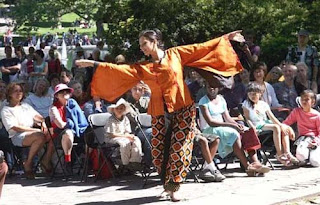 Bangalore
BangaloreRAJ S. RANGARAJAN
Why is it that people want to own a house and live in it?
What exactly is the drive?
 Have you noticed how owing property seems to be a global hope? Everyone and anyone – whether from Bangalore or Boston or Bermuda – dreams of owning a piece of land. Some like to build on it, others think of using it as an investment. Indian legends of yore and generic grandma stories have held forth benevolently on the advantages and benefits of owning land. Looks like these days, many of the old dictates are being taken to heart with Indians buying land as tho ugh it is going out of style. More so in some states of the Indian union.
Have you noticed how owing property seems to be a global hope? Everyone and anyone – whether from Bangalore or Boston or Bermuda – dreams of owning a piece of land. Some like to build on it, others think of using it as an investment. Indian legends of yore and generic grandma stories have held forth benevolently on the advantages and benefits of owning land. Looks like these days, many of the old dictates are being taken to heart with Indians buying land as tho ugh it is going out of style. More so in some states of the Indian union.Wonder why the fascination with land. Why not a pond or a river? We have heard of millionaires who own ranches and rivers, of celebrities who own castles and build lakes, but land – with brick and mortar – seems to be the common man’s dream. Let’s face it: a river or a stream is also property, but it is not hard-core. Not too many people know what to do with a body of water, unless they are creative architects who may be able to work wonders with water. Proponents of vasthu sastra talk favourably of water playing a significant role in a practitioner’s well-being or of the institution he or she owns or belongs to.
In the United States, the “American dream” presupposes owning property. At least that is the collective wisdom on the subject. Why is owning property so important? Why cannot one pass one’s time on earth without owning property? Is it the same syndrome that forces a schoolboy to scratch his name on his desk for immortality? Is it because we are basically earth-prone and of the earth? For some reason common behaviour has it that one should own property – a roof over one’s head – the famous makhaan that rounds up roti and kapda in populist culture.
Now, thanks to India’s plunge into material success and obviously liking it, the country’s rich and famous and wannabee celebrities are upping the ante to the next level. Apart from land – a house or a bungalow (I gather, these days the operative word is villa), Indians these days aspire to build a lovely, cosy and warm villa with petunias and geraniums (read garden!). And, in this home, they want to fill in luxury items from different parts of the world: perhaps Muranos from Venice, Wedgewoods from Britain or Farsh rugs from Persia, and of course the mandatory mementos of their trips to lands far and away.
Cosmic connection?
What is it that makes the human spirit want to build a home and decorate it? Is it listening to dictates of what is popular and acceptable or is it the cosmic connection to establish a place to stay? Perhaps a psychologist can tackle this better? With affluence has come an interest and obsession to expand one’s horizons. If you have a good home, what is wrong in having one with luxury items? Till the other day, “we couldn’t afford those lovely items” was the common refrain. Now anything is affordable. Hedonism and splurging are in, being a home bird and saving money are out.
Thus, we find Indians buying wall hangings and paintings, attending art shows, admiring antiques and discussing art. There always existed the artistic class, but more and more people have joined the bandwagon in exposing themselves to culture. Whether one is discussing figurative art, abstractionist art or even installations, we now have a new breed of Indians walking that extra mile to expose themselves to aesthetic pleasure.
At five-stars we overhear people discussing younger artists such as Raqib Shaw, Atul Dodiya and Jitish Kallat with older men Husain, Gaitonde and Tyeb Mehta having crossed into the big leagues – the million-plus dollar threshold.
In conclusion the question remains: Why does one have to own property? Any takers?
(The author can be reached at raj.rangarajan@gmail.com)










